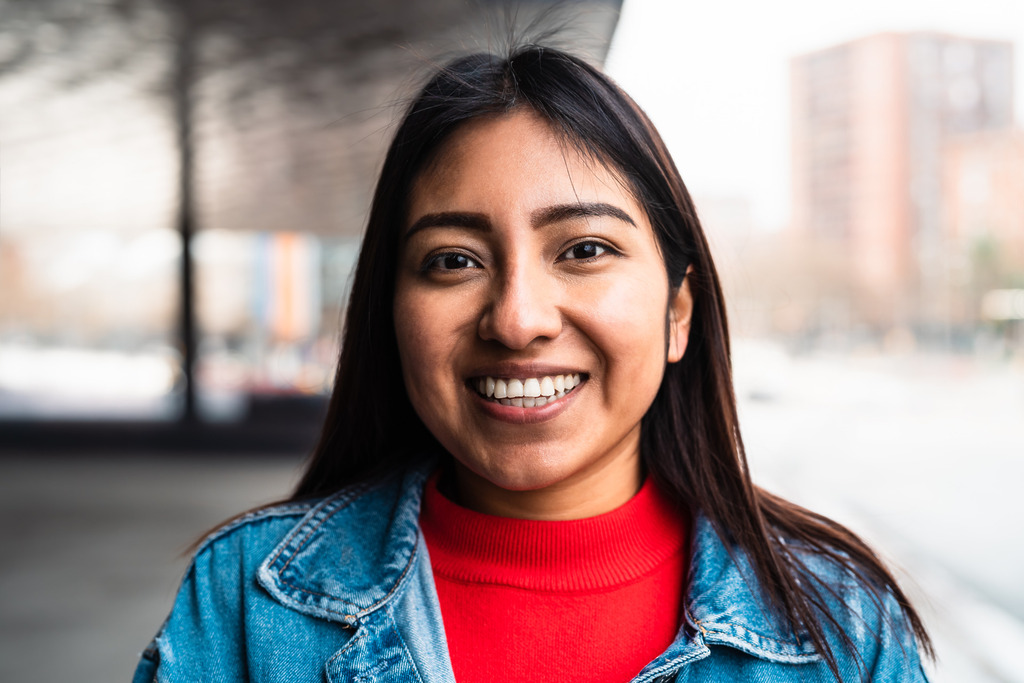During National Minority Mental Health Awareness Month – and every month – let’s unite to support and empower historically underrepresented communities in their mental health and substance use disorder journeys. In this blog, we’ll explore Native American and Alaska Native mental health – and learn how we can work together to eliminate disparities and stigmas and remove the barriers that impact this community.
Bebe Moore Campbell was an author, teacher, and mental health advocate dedicated to creating awareness about minority mental health disparities and removing the stigma surrounding minority mental health. She fought tirelessly to create a safe space for underrepresented minorities to address their mental health issues and, in 2008, congress formally recognized Campbell by naming July ‘Bebe Moore Campbell National Minority Health Awareness Month.’ Although Bebe’s legacy lives on, minorities continue to face obstacles when it comes to mental health due to cultural stigmas and lack of access to adequate care. One underrepresented minority that’s particularly affected is American Indians and Alaska Natives.
Although issues like suicide, violence, substance use and mental health disorders occur in all populations, several studies conclude that American Indian and Alaska Native communities continually demonstrate particularly high rates of mental health and substance use disorders when compared to the rest of the U.S. population. In fact, according to the Indian Health Service, American Indians and Alaska Natives have higher rates of suicide, substance use disorder, and alcohol use disorder than any other minority group in the U.S. In addition, this group experienced more alcohol-related deaths than the rest of the U.S. population from 2016 – 2020, and drug overdose death rates increased by 39% from 2019 – 2020. Post Traumatic Stress Disorder is also prevalent among American Indians and Alaska Natives.
Reasons for Disparities in Native American and Alaska Native Mental Health
Barbara Roland, Mental Health Branch Chief for Indian Health Service’s Division of Behavioral Health, believes that generational trauma might be one reason for the disparity in Native American and Alaska Native mental health.
“American Indians and Alaska Natives have suffered a great deal of generational trauma, going back to the time when our land was taken from us – and so many other traumatizing events,” she said. “Our people might not even know what kind of trauma their ancestors faced, yet it is perpetuated from generation to generation and often leads to behavioral health issues.”
High rates of poverty among American Indian and Native American populations also create barriers to mental healthcare. Studies indicate that Native Americans in the U.S. are nearly twice as likely than white, non-Native, non-Hispanics to have incomes below the poverty line. In addition, many American Indians and Alaska Natives live in remote rural areas, which can make access to treatment for mental health and substance use disorders a challenge. According to U.S. Census data, there were 9.7 million American Indian and Alaska Natives in 2021, and 574 federally recognized tribes. Approximately 22% live on tribal lands. Navajo Nation, for example, has more than 400,000 members living sporadically throughout a widespread, remote area.
Roland, a licensed professional counselor and citizen of the Cherokee Nation, said that the fear of being judged and the stigma attached to mental health treatment might also be a be a factor.
“There’s a privacy aspect in the AI/AN community, and members often don’t want to speak about certain topics outside the family,“ she said. “As a population, we are ravaged by substance abuse. We are ravaged by suicide. We’ve been judged as a population for so long that there’s a stigma, and many AI/AN are embarrassed to talk about it so they often miss out on seeking treatment.”
Removing the Obstacles and Increasing Access
According to the National Institute of Health, the key to improving mental health outcomes for American Indians and Alaska Natives is to increase access and availability to qualified healthcare services and facilities. Licensed Professional Counselor and Mental Health Service Professional Dahlia Reyes believes that another crucial component is offering culturally informed treatment that encompasses Native American and Alaska Native traditions, spirituality, and beliefs. Reyes, the executive director of Harmony Health Group’s Tennessee region, says Harmony has partnered with several American Indian and Alaska Native tribes throughout the Eastern United States to do just that.
“There is a huge need for mental health and substance use disorder treatment in the American Indian and Alaska Native population,” she said. “Their own treatment facilities can get overrun with long wait times for appointments, so there’s often a need to partner with external sources for treatment to help bridge the gap. We utilize the Wellbriety curriculum, which was developed in conjunction with tribal members, and incorporate it with other treatment models to create a holistic and well-rounded treatment program that’s culturally sensitive and relevant.”
Indian Health Service, charged with a mission to “raise the physical, mental, social, and spiritual health of the American Indians and Alaska Natives to the highest level,” is also working diligently toward that goal. In addition to overseeing national advocacy, policy development and administration, their Division of Behavioral Health manages behavioral health, substance use disorder, and family violence programs for American Indians and Alaska Natives.
Because the American Indian/Alaska Native population has a high suicide rate, Roland says that Indian Health Services has a strong emphasis on suicide prevention. Suicidal behaviors are often connected with co-occurring conditions like substance use disorder and depression, so all Indian Health Services employees receive Question. Persuade. Refer (QPR) training and other education to recognize the signs of crisis and refer individuals for help.
A variety of initiatives, such as integrating mental health and primary care services, are also helping Indian Health Services and the Division of Behavioral Health increase access and eliminate disparities. Roland believes integrating these services can also help remove the stigma associated with Native American and Alaska Native mental health.
“By integrating mental healthcare and physical healthcare, AI/ANs can go to one clinic for all of their healthcare needs – like optometry, podiatry, obstetrics…and mental health,” she said. “Our communities tend to be close-knit, so integrating services helps remove the stigma and eliminates the embarrassment factor of parking your car outside of a behavioral clinic and having everyone you know call you to ask what’s wrong. And if a patient scores high on the suicide or depression scale during a medical appointment, they can immediately see a mental health professional during the same visit.”
Progress is also being made on other fronts. In June 2023, the Department of Interior announced a continued investment in the Bureau of Indian Education’s Behavioral Health and Wellness Program. The program increases access to behavioral health and wellness services for students and staff at bureau-funded schools and programs and offers “indigenous-focused, evidence-based, and trauma-informed” treatment and support. Resources are also available through agencies like the Substance Abuse and Mental Health Services Administration’s Office of Tribal Affairs and Policy, which ensures that “American Indians and Alaska Natives have access to prevention, treatment, and recovery support services that reflect the best of modern science and traditional cultural practices.”
United We Stand
Bebe Moore Campbell shed light on the struggles minorities face when it comes to mental health, and her trailblazing efforts to destigmatize mental health, create national awareness, and affordably make treatment and recovery accessible to all have been paying off – but there’s more progress to be made.
Roland and Reyes agree and that the best way to move forward and eliminate cultural disparities in Native American and American Indian mental health – and in all populations – is to work together, as a society.
“If we can normalize mental health treatment as a society, we can help remove the stigma that not only the American Indian and Alaska Native people face – but that all individuals face,” Roland said. “If someone needs mental health treatment – no matter what their culture – they should be able to seek it without shame or fear of judgment.”
Reyes agrees, adding that becoming more culturally aware as a society and having a desire to learn about one another’s differences could make a world of difference – literally.
“There is a fear amongst many minorities that seeking treatment means that you’re ‘crazy,’ or that stigmatizing labels will be attached to your cultural beliefs,” Reyes said. “Knowledge is the key – not only for minorities, but for everyone. The more we can educate ourselves about what mental health looks like in different communities, and the more we can learn how to provide effective, culturally informed treatment, the better the outcome will be for patients – and for society as a whole. We will have healthier communities, which will result in long-term improvement throughout the U.S.”
Harmony Health Group is committed to providing top-notch care for individuals struggling with substance abuse and mental health issues. With state-of-the-art rehab facilities in Florida, Massachusetts, North Carolina, New Jersey, and Tennessee, we are well-equipped to address a wide range of concerns. Our programs cover not only drug and alcohol dependency but also anxiety, depression, and other mental health conditions. We accept insurance from major providers such as Aetna, Cigna, Blue Cross Blue Shield, and United Healthcare, ensuring that our services are accessible to many. For those without insurance, we offer flexible private pay options, so you can discuss the cost of different treatments with us directly.
Our dedicated team of professionals is passionate about helping you achieve lasting recovery through personalized and evidence-based methods. At Harmony Health Group, we believe everyone deserves a chance at a healthier, more fulfilling life. We invite you to reach out and learn more about our diverse treatment options. Taking that first step towards wellness is crucial, and we are here to support you every step of the way. Contact us today to start your journey to recovery and discover how our expert care can make a difference in your life.
If you are experiencing a behavioral health disorder – or you suspect that someone you care about is struggling – don’t hesitate to seek help. There’s no shame in getting treatment – in fact, it’s a positive first step in your well-deserved journey to recovery. So don’t be afraid to reach out. Together, we can remove the stigma and help make mental health and substance use disorder treatment accessible to all.

